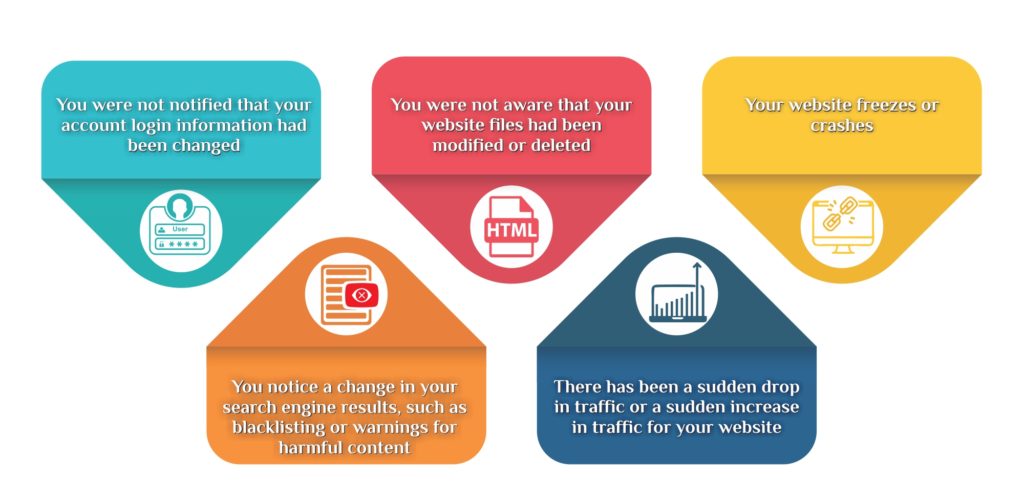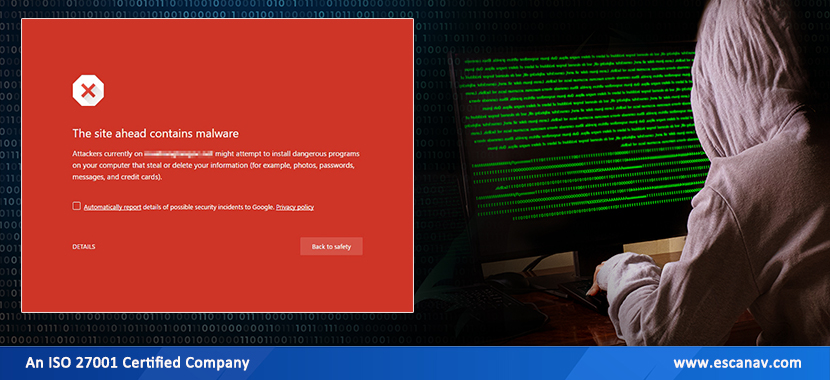As cybercrime evolves and grows, malware remains a constant weapon for hackers. Malware is a type of software designed to harm a website or computer. There are several types of malware that can be used against websites, including those that steal information about users, hold websites for ransom, and even take control of the website itself. There are many cases in which victims of malware don’t realize they’ve been attacked until it is too late. Every day, more than a million new malware threats are published. To safeguard all website owners, we provide automatic virus removal. It is essential to take matters into your own hands and be proactive about website security issues if you want to keep your website secure. The first is to learn how to manually look for malware indicators. There are primarily two methods for doing this. Using a free website malware scanner that can identify and automatically eliminate dangerous information is the second and most efficient technique to safeguard against malware. To examine your website for malware, follow these steps, beginning by identifying the typical signs of malware.
Look Out For Common Malware Signs
Malware may not always be apparent to you or your visitors. Many website owners assume that website defacement, an attack that changes the visual appearance of a website, is the only way to discover malware on their site. Malware is so effective because it has the ability to hide and be elusive.
Even if your site hasn’t been defaced, you might have malware if:
- You were not notified that your account login information had been changed
- You were not aware that your website files had been modified or deleted
- Your website freezes or crashes
- You notice a change in your search engine results, such as blacklisting or warnings for harmful content
- There has been a sudden drop in traffic or a sudden increase in traffic for your website

If any of these signs appear, follow these steps to confirm your suspicions.
URL Scanning for Malware Detection
A URL scanner can be used to identify malware on your website if you suspect it has it. With Nemasis – DAST, you can scan any URL for free for 30 days. You can conduct a free malware external scan of your site by typing the domain name of your website (for example, mywebsite.com). The scanning of your site ensures that your site is up-to-date and secure. To identify the source of an infection on your website, begin by looking at its code if it has been flagged for malware. As a result, you’ll be able to remove malware from the clean code.
Website Monitoring for Changes
It is a best practice for all site owners to create frequent backups of their sites. By using a tool that creates backups automatically, you can do this easily. In the event of a cyberattack, this provides several advantages, including a clean copy of your site. You can also spot potential malware by knowing what clean, normal code looks like on your website.
Suppose something goes wrong and you don’t have a clean backup. If you are aware of any malware, look for it in your database, files, and source code. enough with your website or content management system (CMS). Do not worry if coding isn’t your second language – check out the next section for more information about automated malware scanning. Here’s how to search for malware in your database, source code, and files if you’re comfortable digging into your website.
How to check for database malware
To check your databases for malicious code, you will need access to a database administration tool such as phpMyAdmin offered by your web host. Discover how to check your website for malware with Nemasis – DAST once you’ve gained access to the tool.
How to check for malicious code in your source code
When searching for malware in a source code, you’ll want to check attributes: iframe attributes. Look for any lines starting with “<script src=>” and check for unfamiliar URLs or file names that follow. Similarly, search for odd URLs contained in <iframe src=”URL Anything that seems out of place, or the URL that doesn’t look familiar, is likely a sign of a cybercriminal.
How to check for malware in your files
There are several ways to manually check for malware in your website’s files, with varying degrees of difficulty and effectiveness. Most website owners should search for malicious content in their website files using FTP or their host’s file manager. Here are some signs of malware and what you should look for. If you want to properly monitor for malware, you’ll have to examine your database, source code, and files regularly. The easiest way for someone new to code to check their website for malware is also the most reliable.
Automatic Website Scanning and Malware Removal
According to recent data, cybercriminals are more active than ever. Attempted attacks increased by 15.1% in 2021 over the previous year. As criminal activity increases, you’ll need protection that keeps up, such as a website scanner that removes malware automatically.
Automatically checking the security of your website on a daily basis not only saves you time but may also help you avoid infections. This will reduce the impact of malware on you and your visitors. The majority of malware scanners automatically scan for known and common malware types such as backdoor files, shell scripts, and spam. A malware detection tool alerts the website owner immediately, and some solutions even remove malware automatically.
It’s important to keep in mind that preventative measures against malware are only as effective as their ability to respond to new types of malware and trends. A comprehensive scanner should be backed up by a database that logs the most recent and persistent threats, providing the best protection.
As cybercrime and malware continue to evolve, your best defence is to be proactive about your website’s security. Additionally, search engines prefer safe browsing and websites, so malware can also hurt your Search Engine Optimization (SEO) ranking. Whether you use hands-on methods or deploy an automated solution, learning the different ways to check for malware will help your website be secure. You can learn more about Nemasis – DAST website security plans or contact us with questions if you’re interested in installing an automatic website scanner.







